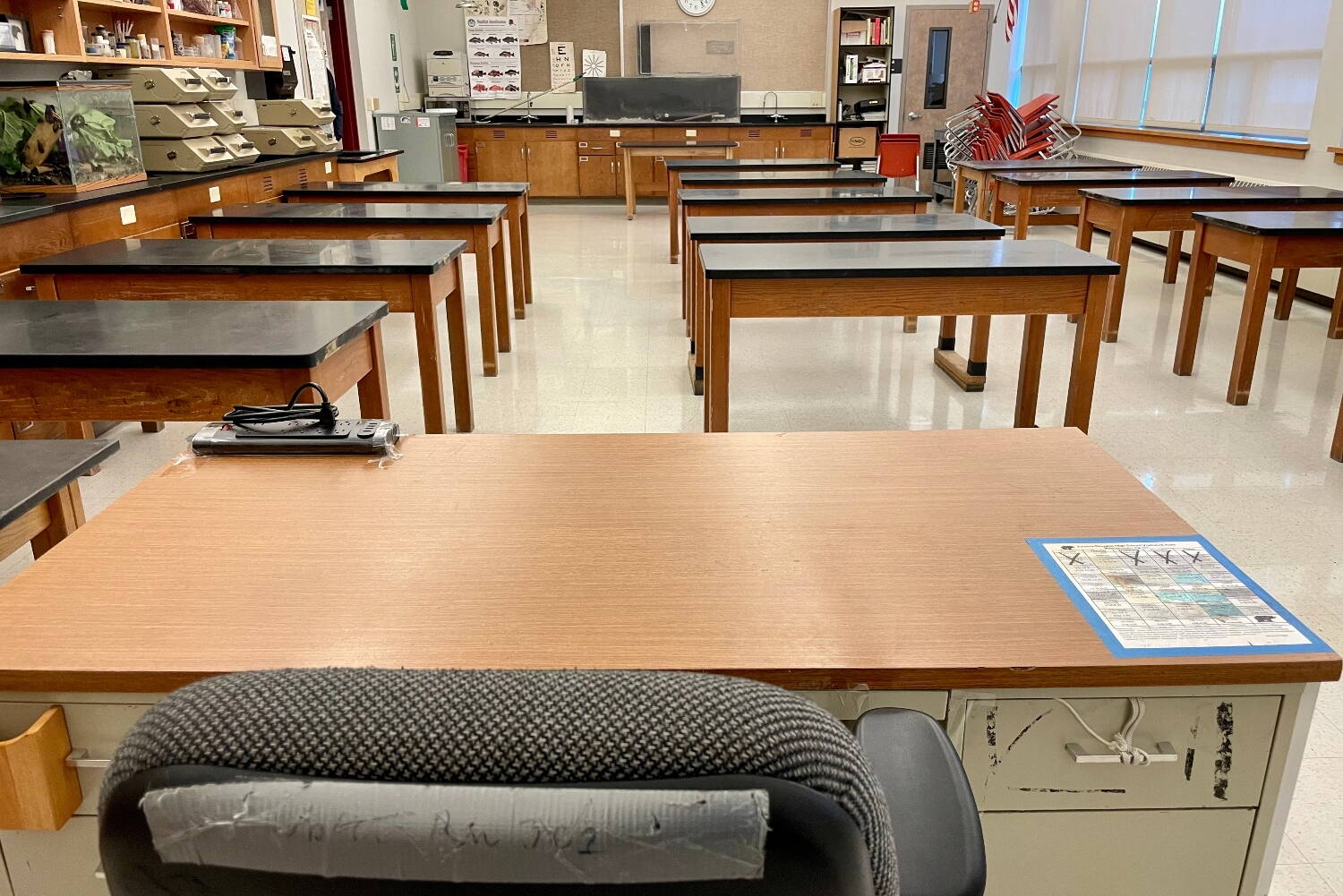Access to faster internet next year is on the line for dozens of rural Alaska schools as a result of Gov. Mike Dunleavy’s education bill veto.
In addition to losing a historic increase to the per-student formula that funds schools and money for student transportation, Alaska’s rural schools may not be able to apply by the deadline for federal grants to pay for internet speeds of up to 100 megabits per second this year — a four-fold increase over previous years.
Supporters say the increase is critical for rural schools where the cost of internet is high, and lack of internet is a barrier to an equitable education for students.
Lisa Parady, executive director of the Alaska Council of School Administrators, an umbrella organization for associations of school leaders, said that if the House can move internet speed legislation by Wednesday, schools should be able to make the deadline. She is a longtime advocate for increased access to internet speeds for rural schools.
“Connectivity is synonymous with opportunity,” she said. “So denying our rural communities adequate bandwidth not only perpetuates educational disparities, but also hampers their ability to innovate, collaborate and compete on a global scale.”
Now rural districts have their hopes pinned to another standalone internet measure, House Bill 193, which was introduced last year by Rep. Bryce Edgmon, I-Dillingham, that could change state law before it is too late for schools to apply for the increased speeds. The bill is awaiting a vote of the full House.
It would have to become law before March 27 for schools to benefit next year.
House Rules Committee Chair Rep. Craig Johnson, R-Anchorage, is among those who decide which bills will advance to the floor for votes. On Tuesday, he did not commit to when or whether the bill would come forward.
“We know there’s a deadline; we know it’s important. We’re addressing that. In what form it comes to the floor, how it comes to the floor: Those are the discussions that are happening in the next three, four days,” he said.
He pointed to another bill, House Bill 392, introduced by Rep. Tom McKay, R-Anchorage, which includes an increase to internet speeds for rural schools. The bill resembles the one Dunleavy vetoed, Senate Bill 140, although with the addition of the governor’s proposal for teacher retention bonuses. It is unclear whether that bill could succeed, considering the House rejected the bonus provision in February.
The Alaska School Broadband Assistance Grant program was created in 2014 to help schools pay for increased access to broadband. It uses federal funding under the E-Rate program to match state dollars roughly 8-to-1.
Last year, 151 schools in half of the state’s districts benefited from the program.
In late February, Alaska’s Education Department advised districts to apply for both 25 mbps and 100 mbps so that they would be eligible for an increase whether or not state law changes.
Industry advocate Christine O’Connor, director of the Alaska Telecom Association, said most schools are in the process of vetting proposals for internet services now. The deadline for a choice is one week away.
“They can choose whatever level they want, but the question for schools will be ‘Is it funded?’ That’s up in the air,” O’Connor said.
She said 25 mbps is usable for a small school, and certainly better than not having internet. Her home internet plan is 40 mbps, which she called a bit low, for reference.
“Going from 25 to 100 mbps is faster but also more capacity,” she said. “More people can use the internet at the same time.”
That, educators in rural and remote districts say, is the crux of the problem.
Equity and accountability
Madeline Aguillard, superintendent of the Kuspuk School District, said that at 25 mbps only about 10 students can take online tests at the same time in a school building, which raises questions for her about how schools can be accountable for student learning if their access is not equitable.
“Even then sometimes the test kicks students out. Imagine taking a standardized test, and the screen goes blank and then someone from the district office tells you that you have to start over … four times. How well do you think you would perform?” she said. “How accurate is our data, really? What does that do to the confidence of that student, when those results come back however many months later? All because of something that is absolutely controllable.”
Emily Eakin, director of technology for the Northwest Arctic Borough School District, told the House Finance Committee that two of her district’s biggest schools have more than 300 students and staff — all sharing 25 mbps.
“Twenty-five megabits per school is insufficient to meet the needs of our current and growing demands of learning and general operations in our districts. With increasing online educational curriculum, testing and business operations, our bandwidth requirements have escalated dramatically in recent years,” she said.
She said “frustratingly slow” speeds keep staff from completing even simple tasks like taking attendance and keep students from accessing online materials.
Alaska ranks 51st in the nation for internet coverage and availability in the state’s Five Year Digital Equity Plan, which aims to increase access. The report calls the lack of access an “obstacle to community and economic development.”
• Claire Stremple is a reporter based in Juneau who got her start in public radio at KHNS in Haines, and then on the health and environment beat at KTOO in Juneau. This article originally appeared online at alaskabeacon.com. Alaska Beacon, an affiliate of States Newsroom, is an independent, nonpartisan news organization focused on connecting Alaskans to their state government.

